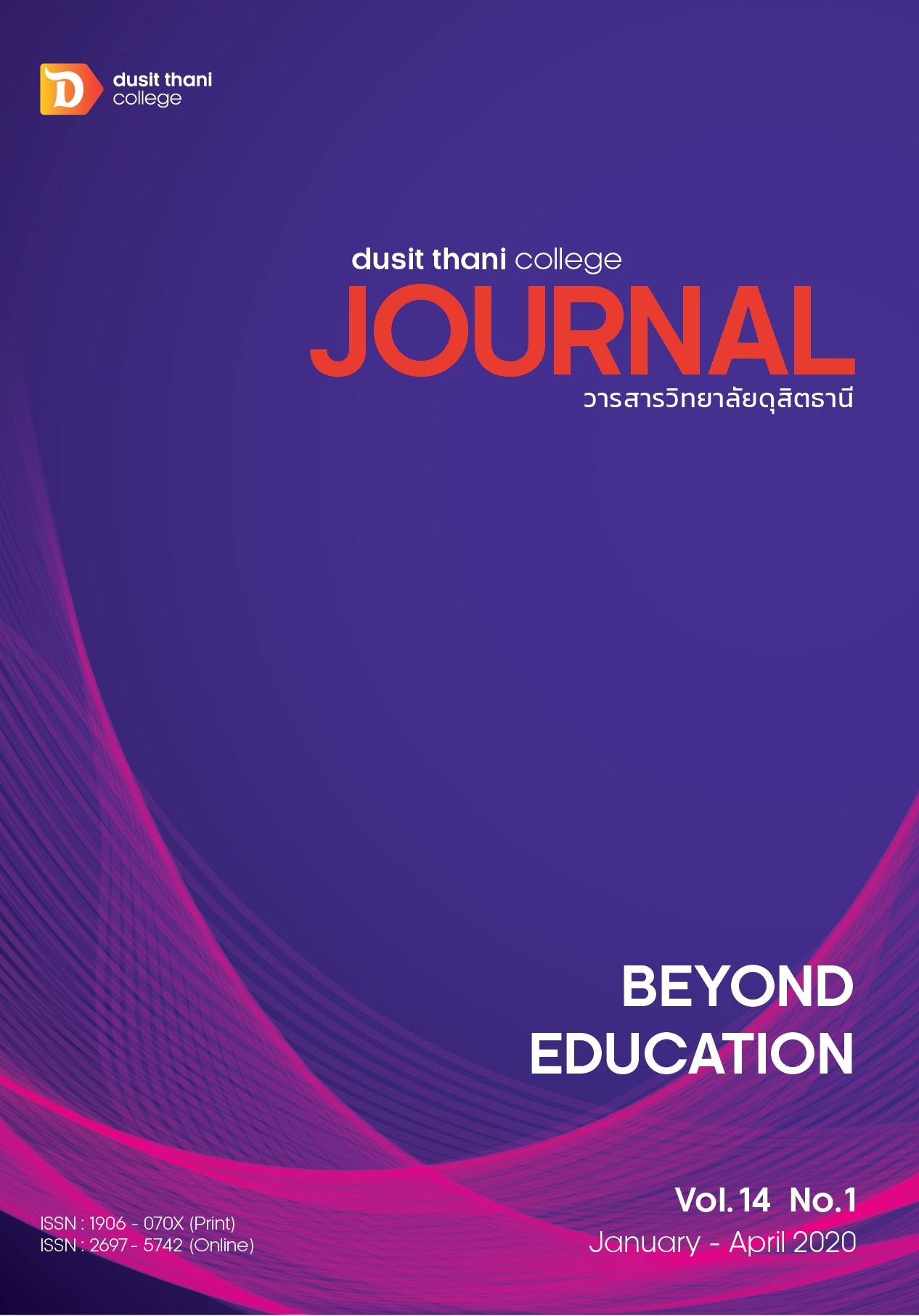การพัฒนาศักยภาพบุคลากรเพื่อการท่องเที่ยวเชิงเกษตร ตำบลแม่ทา อำเภอแม่ออน จังหวัดเชียงใหม่
Main Article Content
บทคัดย่อ
งานวิจัยนี้มีวัตถุประสงค์เพื่อวิเคราะห์ปัจจัยที่มีอิทธิพลต่อระดับการพัฒนาศักยภาพของบุคลากรในชุมชนเพื่อการจัดการการท่องเที่ยวเชิงเกษตร โดยรูปแบบการวิจัยเป็นการวิจัยเชิงปริมาณและใช้ทฤษฎีการจัดการ (Management Theory) และแนวคิดการเสริมสร้างศักยภาพและการพัฒนาทรัพยากรมนุษย์เป็นกรอบการวิจัย พื้นที่วิจัย คือ ตำบลแม่ทา อำเภอแม่ออน จังหวัดเชียงใหม่ ผู้ให้ข้อมูล คือ กลุ่มผู้บริหารและเจ้าหน้าที่องค์การบริหารส่วนตำบลแม่ทา 14 ราย กลุ่มแม่ทาออแกนิคส์ 22 ราย และผู้นำธรรมชาติ 13 ราย โดยเครื่องมือที่ใช้ในการวิจัยสำหรับการเก็บรวบรวมข้อมูล คือ แบบสอบถามและวิเคราะห์ข้อมูลโดยใช้สถิติพื้นฐาน
การพัฒนาศักยภาพบุคคลากรเพื่อการเสริมสร้างขีดความสามารถในการจัดการทางการท่องเที่ยวด้วยแนวคิด human resources development by KUSAMOC for tourism management concept เป็นการเสริมสร้างพลังของคนรุ่นใหม่เพื่อการเปลี่ยนแปลงทางสังคม โดยรวมค่าเฉลี่ยทั้ง 7 องค์ประกอบ มีค่าเฉลี่ยรวมเท่ากับ 3.97 นั่นหมายความว่าศักยภาพของบุคลากรในชุมชนตำบลแม่ทา ว่าด้วยการจัดการการท่องเที่ยวเชิงเกษตรอยู่ในระดับสูง (Advance) การค้นพบจากงานวิจัย คือ การริเริ่มที่มุ่งเน้นเป็นรายบุคคลนำไปสู่การทำงานร่วมกันเป็นทีมด้วยการเสริมสร้างพลังของคนรุ่นใหม่เพื่อการเปลี่ยนแปลงทางสังคมโดยส่งเสริมการเรียนรู้เกี่ยวกับกลยุทธ์ทางการพัฒนาการท่องเที่ยวจากการส่งต่อจากรุ่นสู่รุ่นด้วยความมุ่งมั่นการเป็นผู้นำแห่งการเปลี่ยนแปลงด้วยพลังของคนรุ่นใหม่อย่างแท้จริง
Article Details
นโยบายการพิจารณากลั่นกรองบทความ
- บทความวิจัยและบทความวิชาการทุกเรื่องที่จะได้รับการตีพิมพ์ต้องผ่านการพิจารณากลั่นกรองโดยผู้ทรงคุณวุฒิ (Peer Review) ในสาขาที่เกี่ยวข้อง จำนวน 3 ท่าน/บทความ
- บทความ ข้อความ ภาพประกอบและตารางประกอบที่ลงตีพิมพ์ในวารสารเป็นความคิดเห็นส่วนตัวของผู้เขียน กองบรรณาธิการไม่จำเป็นต้องเห็นด้วยเสมอไป และไม่มีส่วนรับผิดชอบใด ๆ ถือเป็นความรับผิดชอบของผู้เขียนแต่เพียงผู้เดียว
- บทความที่จะได้รับการตีพิมพ์จะต้องไม่เคยตีพิมพ์ เผยแพร่ที่ใดมาก่อน และไม่อยู่ระหว่างการพิจารณาของวารสารฉบับอื่น หากตรวจสอบพบว่ามีการตีพิมพ์ซ้ำซ้อน ถือเป็นความรับผิดชอบของผู้เขียนแต่เพียงผู้เดียว
- บทความใดที่ผู้อ่านเห็นว่าได้มีการลอกเลียนหรือแอบอ้างโดยปราศจากการอ้างอิง หรือทำให้เข้าใจผิดว่าเป็นผลงานของผู้เขียน กรุณาแจ้งให้กองบรรณาธิการวารสารทราบจะเป็นพระคุณยิ่ง
เอกสารอ้างอิง
2. Attawut Chatchawan. (2015). Self-Development. Retrieved from https://www.gotoknow.org/posts/441616.
3. Institute for Resource Development and Sustainable Agriculture of Mae Tha. (2016). Sustainable Agriculture of Mae Tha. Chiang Mai: Institute for Resource Development and Sustainable Agriculture of Mae Tha.
4. Josephat Stephen Itika. (2015). Fundamentals of Human Resource Management. Netherlands: Hanze University Groningen Zernikeplein.
5. Marco Aurisicchio Et all. (2013). The Function Analysis Diagram: intended benefits and co-existence with other functional models. England: Design Engineering Group.
6. New Philanthropy Capital Organization. (2014). Developing a Theory of Change (revised March 2014). England: London, SE1 9BL.
7. Thanandasak Borananantakun. (2014). Empowering Human Resource Development. Thailand: Pathum Thani University.
8. Victorian Council of Social Service. (2016). Communities Taking Power: Using place-based approaches to deliver local solutions to poverty and disadvantage. Australia: Victorian Council of Social Service.


